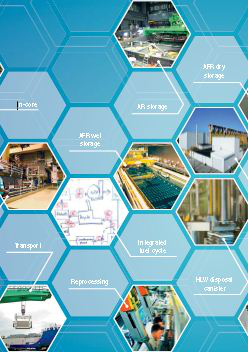Speaker
Mr
John Kyffin
(Sellafield Ltd)
Description
The United Kingdom’s Nuclear Decommissioning Authority has announced its preferred strategy for managing spent oxide fuel arising from the EdF Energy fleet of Advanced Gas-cooled Reactors (AGR). This is to reprocess the optimum quantity of fuel at the Thermal Oxide Reprocessing Plant (THORP), Sellafield and place the remaining fuel and all future arisings into interim storage in the THORP Receipt and Storage (TR&S) facility fuel ponds pending geological disposal; storage periods up to 80 years are likely. Sellafield Ltd. is responsible for completing the technical basis for interim storage of AGR fuel and making a safety case to deliver this strategy.
The imminent transition from buffer storage of fuel pending reprocessing to interim storage without the contingency of reprocessing of fuel that might fail (defined as penetration of the fuel cladding) during storage requires a more thorough technical basis. Therefore, Sellafield Ltd. has developed a programme of technical work to: increase confidence in the storage regime; demonstrate that corrosion models are applicable to cladding after higher irradiation and to changes in fuel design; understand the efficacy of corrosion inhibition at higher temperatures than previously studied; characterise failed fuel; and develop methods for fuel condition monitoring.
The current technical underpinning for interim storage of AGR fuel is primarily empirical, based on safe storage in sodium hydroxide dosed pond water of a large quantity of fuel, including some fuel stored for a period of nearly 25 years. Post storage hot cell examination of a sample from this long stored population is currently ongoing as a demonstration of the storage regime. Furthermore, due to the continued evolution of the AGR fuel design and reactor operations, it is also necessary to ensure that the storage experience accrued is applicable to modern fuel discharges that will make up the majority of the storage inventory. Post irradiation examination of modern high burn-up fuel has also been completed to address changes in irradiated cladding properties resulting from changes in reactor operation.
This paper summarises the existing technical basis to support the transition from reprocessing to interim storage, the process of developing a programme of work to identify and address gaps, and the latest results available from the ongoing post irradiation and post storage examination work.
Country/ int. organization
United Kingdom
Author
Mr
John Kyffin
(Sellafield Ltd)
Co-author
Mr
Andy Hillier
(Sellafield Ltd)

